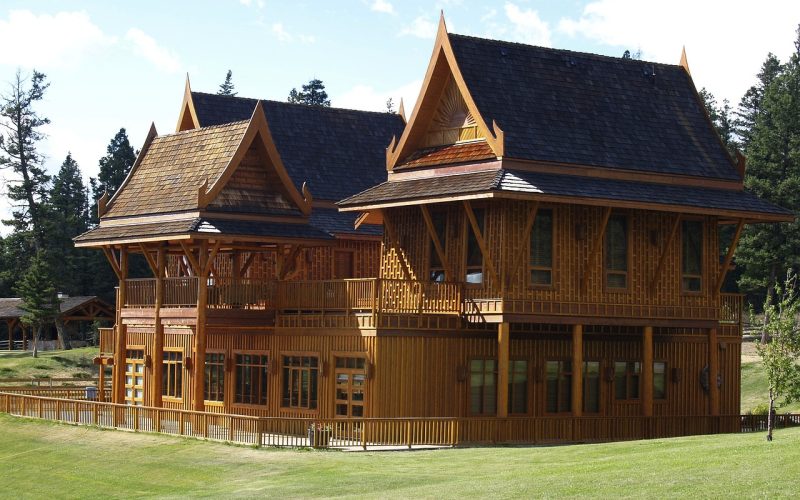If you’ve ended up here, you probably wonder, “What is a guest house?” Or maybe your question is, what is the difference between a guest house and a B&B?
Or is it the difference between a guest house and a hotel that interests you? Or maybe you are a traveler who is just interested in what a guest house is.
Trust me, you have come to the right place on the internet.
In this article, we will enlighten you and explain everything you need to know about a guest house, its interesting history, and the advantages of this type of accommodation.
Let’s get into the question of what a guest house is without further ado.
What is a Guest House: Meaning and Etymology
A guest house (also spelled “guesthouse”) is the literal translation of the word “house for the guests.”
A guest house is an accommodation where a traveler stays in a house hosted by a resident.
They are generally less expensive, less formal, and more personalized than hotels.
It is a unique form of accommodation. It consists of apartments or rooms that are made available to customers for the short or medium term.
In some places, a guest house resembles a hostel, bed and breakfast (B&B), or inn; in others, a guest house is inexpensive, similar to a hotel-like lodging.
In other places, it is a private house converted for the exclusive use of guest accommodation.
The owner usually lives in a completely separate space within the property, and the guest house can serve as a form of lodging business, which characterizes it the most.
In some parts of the world, guest houses have become the most common type of accommodation or the only one available.
This may be rooms in a private house converted into tourist accommodation and, therefore, for lodging purposes.
The history of the guest house dates back to antiquity. Perhaps the most famous early examples of guesthouses were lodgings built along the Silk Road, the renowned network of overland trade routes from East Asia to Europe. Finding a safe place to sleep has always been essential to travel logistics.
During the Silk Road era (from the 2nd century BC), savvy entrepreneurs and rulers built safe accommodations for caravanners transporting goods over long distances.
These buildings were called “caravanserai” (khans, hans, funduqs, wikalas, etc., depending on the place).
Caravanserais were originally lodges, guest houses, motels, hostels, and inns (the term “guest house” was not used until recently). They were strategically built so travelers could move from roof to roof on a fixed and reliable schedule.
Fast-forward to the 20th century, leisure travel has become much more accessible to the average person.
Since the 1950s, guesthouses have grown exponentially worldwide, especially among backpackers in Europe and Asia.
Guest houses have now tended to develop unique regional styles, from South America to Europe, Japan, and India, attracting travelers of different tastes and budgets.
Types of Guest House
When it comes to what a guest house type is, the choice is vast. Although the basic features of a guesthouse are standard (bedroom, bathroom, common areas), guesthouse facilities can vary greatly in form and ambiance.
There are eight types of guesthouses you can find while you travel.
Different categories and styles adapted to all possible tastes and needs:
- Rural
- Urban
- Budgets
- Luxury
- Boutique
- Historical/cultural
- Mountain
- Eco-friendly
What kind of Facilities are Provided?
The facilities offered in the guest house may differ from accommodation to accommodation. Guesthouses have few facilities, which is usually reflected in the price, which is generally relatively low compared to other accommodations such as hotels.
For example, guesthouses can be self-contained houses or apartments and offer various sleeping options, from single beds to private units with multiple bedrooms.
Some offer only one room, while others offer several. Common areas can include a living room, a kitchen equipped with utensils where guests can freely cook or prepare their own meals, shower cabins (bathrooms), etc.
Also, some guesthouses may offer breakfast depending on the location; for example, guesthouses located along multi-day hiking (such as the popular Himalayan trails in Nepal) will serve breakfast and dinner at specific times each day.
These guest houses are an integral part of a hiker’s program because there aren’t many other lodging or food options on the highest mountain range in the world. However, some do not offer breakfast or daily room cleaning services.
In this form of accommodation, however, the owner makes the kitchen and living room available to his guests. However, some guest houses may tend to have additional services, such as:
- laundry service
- Concierge Service
- garden
- swimming pool. etc
Guest houses generally operate in a less “commercial” and less “structured” way than hotels. Their environment may feel like home than business, and the rules are often not strict (like early check-in time).
Guesthouses are also often family-owned and operated. Many do not employ external staff. Hosts can take over all the work or share it among family members.
For example, the host’s brother can be the guide/driver, and his grandmother can cook breakfast.
The eggs for your omelet can come from the family’s chickens, vegetables from their garden, and water from a local spring.
Staying in a guest house allows you to discover the local culture from the point of view of the residents (daily life, cuisine, customs). This makes the guest house ideal for travelers looking for a relaxed and homely atmosphere.
Why Should You Stay in a Guest House?
Now that we know what a guest house is, the next question is why you should choose one over other accommodation options. You should consider staying in a guest house on your next trip for several reasons.
Guesthouses are a great alternative to hotels and B&Bs, especially for cheaper and often more charming accommodation.
If you save money on accommodation, you’ll have more to spend on tours, restaurants, car rentals, and nightlife.
Guest houses are the best option for travelers seeking an authentic experience and a pleasant family atmosphere.
A typical feature of this type of accommodation is contact with the locals, which allows guests to learn about and discover their culture and traditions.
Guesthouses can be located anywhere. Plus, since the owner and his family live on the property, it allows you to immerse yourself in the local neighborhood with a more “residential” vibe.
By doing so, you can discover how the locals live and experience something different from the typical accommodation experience, giving you an authentic “slow tourism” experience.
You can learn about daily life, customs, language, and cuisine from a local perspective.
Guesthouses with a social atmosphere help create an environment where guests can meet like-minded and interesting travelers to laugh, eat, and share travel tips. It is common for guests and hosts to talk over a meal or drink.
Some properties work with local tour guides or organize events, such as walking tours and wine tastings.
At this point, you should know choosing this accommodation is the best and cheapest way to travel to places like Asia and Southeast Asia (especially the Maldives).








